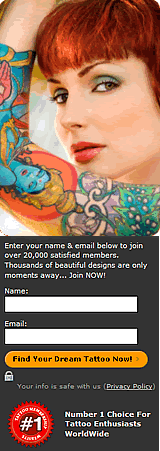Tattooing, as a practice, has been around for over five thousand years. Its origins date back to the Neolithic period. From Eurasian mummies and frozen bodies all the way through the modern world in nearly every region, tattooing has served myriad purposes and has come in just as many forms.
The first evidence, extracted from a frozen corpse dated 3,000 B.C., consisted of a body, nicknamed “The Iceman”, who’s body held a total of 57 tattoos! It is believed that these served the purpose of ancient medical therapy, perhaps symbolic ‘magic’ or even akin to acupuncture.
Since then, tattooing has been prominently mentioned across the ancient world. From the mentions of near full-body tattooing in China, Henna and Mehndi tattooing in India and Egypt, the pre-Christian societies of Europe, spiritual body-art in Paleolithic Japan, and of course the tataus of Samoa, tattooing has served purposes ranging from spiritual, medical, and simple aesthetic reasons.
The methods used over the centuries are as well-varied as the nations from which they originated. The most basic of these are “natural” tattoos, created by rubbing particular types of materials (including ash, coal dust, or gunpowder) into an open wound. The same effect was often obtained by rubbing ink into wounds, as well. “Hand-poked” tattoos were the other primary method, this one used still today in Japan. The ink is inserted into the skin by way of driving the point of an ink-soaked needle made of anything ranging from wood, bamboo, animal bone, or steel beneath the skin. It is identical to our modern machine-driven tattoos but for the fact that it is manual.
The first official record of tattooing in the Western world was in 1066. King Harold II was reported to have the words “Edith” and “England” tattooed on his chest. King George V himself sported several tattoos that he received during visits to both the Middle East and Japan. His sons, the Duke of Clarence and the Duke of York, also received tattoos in Japan and established what would become a family tradition.
Thanks to the exploration of the British empire, by the mid 1800’s tattooing was exceedingly popular among the British gentry and, as reported by Harmsworth Magazine in 1898, one in five members of the upper class were tattooed.
The modern electrical tattooing machine was modified from an intended engraving devise invented by Thomas Edison by Samuel O’Reilly in 1891. The original machine was based on a simple rotary device, far removed from modern tattooing machines which use electromagnetic coils. The first of these was a single-coil device patented by Thomas Riley just 20 days after O’Reilly filed the patent for his rotary machine. The modern twin-coil design was patented by Alfred Charles South.

(A modern tattoo gun)
Tattooing has come a long way from its roots as a purely spiritual device to the modern practice we all know today. Even now new methods and variations are being created, from scarification to “permanent makeup”. Still today, however, its roots as a medicinal and magical practice persist in many regions. Unlike so many things, tattooing has not forgotten its history, and probably never will.


